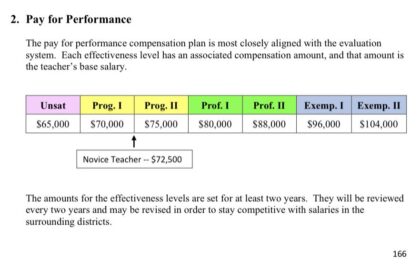Dan Crenshaw’s Critique of Democratic Health Care Proposals: A Fresh Perspective on the Policy Debate
Rep. Dan Crenshaw Questions Democratic Health Care Narratives Amid Rising Political Tensions
In the midst of a heated national discussion on health care reform, Texas Congressman Dan Crenshaw has openly challenged the assertions made by Democratic leaders. He contends that their health care plans fail to address the economic realities facing the country, warning that these proposals could lead to unsustainable government spending without effectively tackling issues like soaring insurance premiums and limited access to care. Crenshaw accuses Democrats of engaging in ‚Äúpolitical posturing,‚ÄĚ suggesting that their promises exaggerate the benefits while obscuring potential drawbacks.
Crenshaw advocates for alternative strategies that, in his view, offer more viable and long-term solutions:
- Enhancing competition within the health care market to reduce costs
- Increasing transparency in medical pricing and billing practices
- Maintaining patient choice by resisting government-controlled health systems
| Health Care Element | Democratic Position | Crenshaw’s Perspective |
|---|---|---|
| Cost of Care | Reduce premiums universally | Risk of increased government expenditure |
| Access to Services | Guarantee universal coverage | Potential decline in care quality |
| Government Involvement | Expand federal role | Limit to regulatory oversight |
Decoding the Political Tactics Fueling the Health Care Debate
The ongoing clash over health care reform is not only a policy dispute but also a strategic battle for political influence, especially with the 2024 elections on the horizon. Democrats have adopted a forceful approach, aiming to rally their supporters by portraying Republicans as opponents of essential health services. This approach often leverages emotionally charged stories and selective statistics to shape public perception, while downplaying the complex fiscal challenges and sustainability concerns raised by bipartisan experts.
Common strategies observed in this political contest include:
- Positioning health care as a fundamental human right to energize grassroots movements
- Crafting targeted communications to resonate with specific voter demographics
- Spotlighting opponents’ policy shortcomings to create a sense of urgency
- Minimizing internal party conflicts to present a united front
| Political Approach | Goal | Effectiveness |
|---|---|---|
| Emotional Appeals | Stimulate voter empathy and urgency | Highly effective in base mobilization |
| Demographic Targeting | Engage key voter segments | Effectiveness varies by region |
| Critiquing Opponents | Weaken resistance narratives | Moderate to strong impact |
| Emphasizing Party Unity | Project cohesion and strength | Variable, influenced by internal leaks |
Exploring Crenshaw’s Vision for Affordable and Sustainable Health Care
Dan Crenshaw promotes a market-driven framework aimed at reducing health care expenses by limiting government intervention. He believes that empowering individuals with greater autonomy over their health care decisions will foster innovation and affordability. His proposals focus on deregulation, expanding the use of Health Savings Accounts (HSAs), and enhancing price transparency to help consumers make better-informed choices.
Additionally, Crenshaw targets the pharmaceutical sector by advocating for policies that encourage competition among drug manufacturers. He supports removing obstacles to generic drug availability and incentivizing the introduction of biosimilars to lower prescription costs. The table below contrasts Crenshaw’s approach with typical Democratic strategies:
| Policy Area | Crenshaw’s Approach | Democratic Approach |
|---|---|---|
| Market Dynamics | Promote competition, reduce regulatory barriers | Expand government programs, increase oversight |
| Cost Management | Enhance price transparency, empower consumers | Implement subsidies, mandate universal coverage |
| Pharmaceutical Pricing | Encourage generics and biosimilars | Government negotiation of drug prices |
Critical Considerations for Future Health Care Policy Development
As the national conversation on health care reform intensifies, it is imperative for policymakers to prioritize transparency and pragmatic solutions over partisan rhetoric. Evaluating proposals with a focus on their real-world impact on coverage, affordability, and patient outcomes is essential. Striking a balance between expanding access and maintaining fiscal responsibility will be crucial to avoid exacerbating the national debt or compromising care quality.
Essential factors for lawmakers to consider include:
- Enhancing transparency in health care pricing to empower consumers
- Fostering competition among providers to drive down costs
- Safeguarding coverage for vulnerable populations
- Incorporating innovative care delivery models and technology
- Ensuring the long-term financial sustainability of health care programs
| Policy Focus | Expected Outcome | Considerations |
|---|---|---|
| Medicaid Expansion | Broader coverage | Potential strain on state budgets, eligibility variability |
| Drug Price Controls | Reduced medication costs | Possible impact on pharmaceutical innovation |
| Telemedicine Services | Improved rural access | Infrastructure challenges, data privacy concerns |
Looking Ahead: Navigating the Future of Health Care Policy
As health care remains a pivotal issue in the lead-up to the 2024 elections, Rep. Dan Crenshaw’s pointed critique of Democratic health care initiatives highlights the deep partisan divides influencing the debate. Both parties are expected to escalate their efforts to shape public opinion on health care reform, making it a critical area for voters to monitor. The Houston Chronicle will continue to provide in-depth reporting and analysis on these evolving policies and their effects on communities nationwide.
‚ÄĒ-
Author : Ava Thompson
Publish date : 2025-10-06 15:29:00
Copyright for syndicated content belongs to the linked Source.
‚ÄĒ-
1 ‚Äď 2 ‚Äď 3 ‚Äď 4 ‚Äď 5 ‚Äď 6 ‚Äď 7 ‚Äď 8












